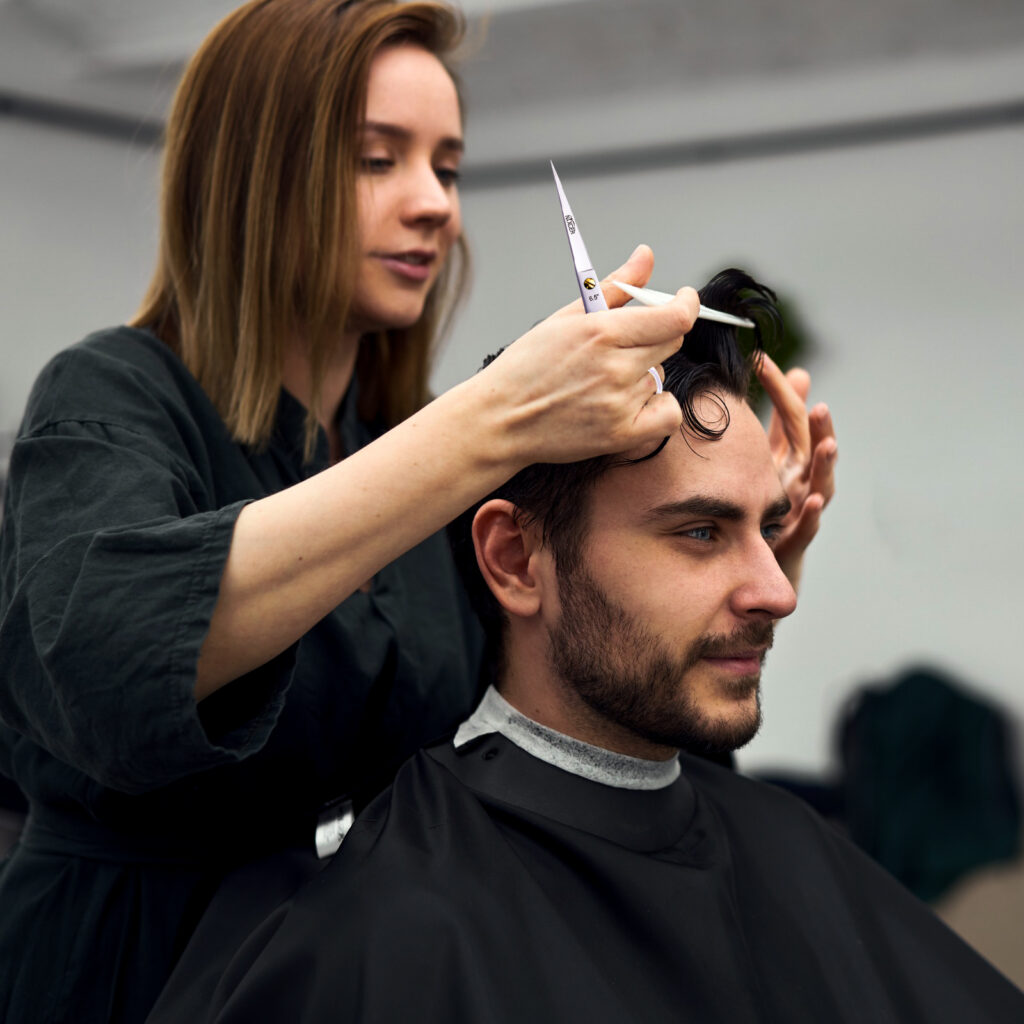Hair cutting scissors are essential tools for any hairstylist. Customizing your scissors to fit your personal style and ergonomic needs can significantly enhance your performance and comfort.
Here’s a comprehensive guide on how to customize your hair cutting scissors for optimal performance.
1. Understanding Your Needs
Before customizing your scissors, it’s essential to understand your specific needs and preferences:
Cutting Techniques: Identify the techniques you frequently use (e.g., point cutting, texturizing, slide cutting) to determine the type of scissors that will best suit your style.
Hand Size and Grip: Assess your hand size and preferred grip style. This will help you choose the right handle type and size.
2. Selecting the Right Blade Type
Different blade types are suited for various cutting techniques and hair types:
Convex Blades: These blades are razor-sharp and ideal for precision cutting and advanced techniques. They are commonly used by professional stylists.
Beveled Blades: These blades are more durable and require less maintenance. They are suitable for blunt cuts and general use.
Serrated Blades: These blades have tiny teeth along the edge, providing a better grip on the hair, which is useful for dry cutting and cutting slippery hair.
3. Choosing the Handle Design
Handle design significantly impacts comfort and control:
Classic (Opposing) Handle: Both handles are the same length and symmetrical. This design is traditional but may cause more strain with prolonged use.
Offset Handle: One handle is shorter than the other, allowing a more natural hand position and reducing fatigue.
Crane Handle: This design features a downward-angled handle, which provides the most ergonomic position and reduces strain on the wrist and shoulder.
4. Customizing Finger Inserts and Rings
Finger inserts and rings can be adjusted or replaced to fit your fingers perfectly:
Finger Inserts: These are removable rubber or plastic rings placed inside the scissor finger holes. They can be swapped out to find the most comfortable fit.
Custom Rings: Some manufacturers offer custom-sized rings to match your finger dimensions exactly, providing a snug and comfortable fit.
5. Adjusting the Tension
Proper tension adjustment ensures smooth and precise cutting:
Tension Screw: Most professional scissors have an adjustable tension screw. Too tight, and the scissors will be difficult to open and close; too loose, and they won’t cut properly. Adjust the screw to find the perfect balance.
Tension Key: Some scissors come with a tension key for fine adjustments. Use it to tweak the tension to your liking.
6. Personalizing the Scissor Length
The length of your scissors should match your hand size and the cutting techniques you use:
Shorter Scissors (5.0-5.5 inches): Ideal for precision work and cutting in tight areas, such as around the ears or for detailed work on fringes.
Medium Scissors (5.5-6.0 inches): Versatile and suitable for most general cutting techniques.
Longer Scissors (6.0-7.0 inches): Best for cutting large sections of hair, scissor-over-comb techniques, and long, straight cuts.
7. Enhancing Ergonomics with Custom Thumb Rests
Thumb rests can be customized for added comfort and control:
Fixed Thumb Rest: A permanent thumb rest that provides additional support.
Removable Thumb Rest: Allows you to adjust or remove the rest according to your preference.
Swivel Thumb: A rotating thumb rest that reduces wrist and thumb strain, providing a full range of motion.
8. Adding Custom Engravings and Decorations
Personalizing your scissors with engravings or decorations can make them uniquely yours:
Engravings: Add your name, initials, or a custom design to your scissors. This not only personalizes them but also helps prevent loss or theft.
Decorative Elements: Some brands offer scissors with decorative elements such as colored accents, gemstone inlays, or unique patterns. Choose a design that reflects your personality and style.
9. Regular Maintenance and Sharpening
Customizing your scissors also involves maintaining them for optimal performance:
Cleaning: Clean your scissors after each use to remove hair and product residue. Use a soft cloth and avoid harsh chemicals.
Oiling: Regularly oil the pivot screw to ensure smooth operation.
Sharpening: Have your scissors professionally sharpened regularly to maintain their cutting edge. Dull scissors can cause hair damage and reduce cutting efficiency.
Final Thoughts
Customizing your hair-cutting scissors can significantly improve your performance, comfort, and satisfaction. By understanding your needs and preferences, selecting the right blade type, handle design, and other features, you can create a pair of scissors that feels like an extension of your hand. Regular maintenance and personalization will ensure your scissors perform optimally, allowing you to provide the best service to your clients. Invest the time and effort into customizing your tools, and you’ll see a noticeable difference in your cutting experience and results.



